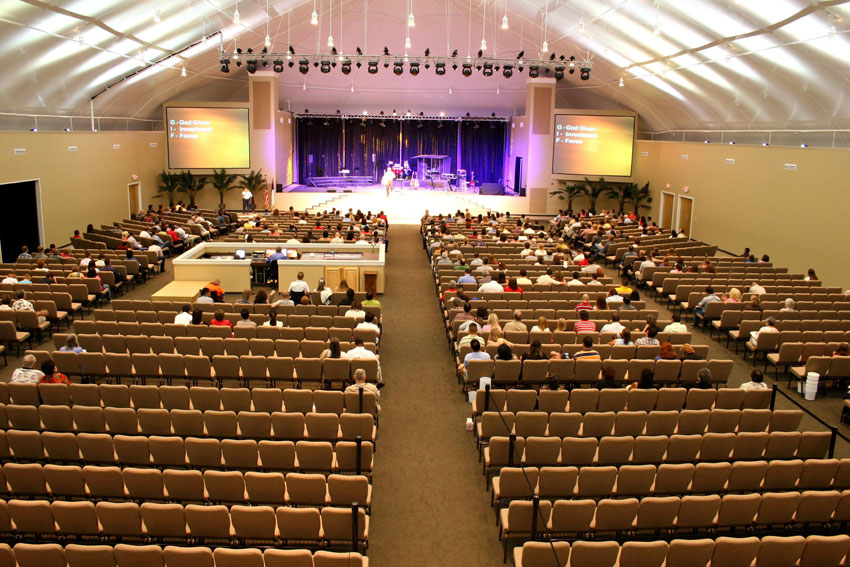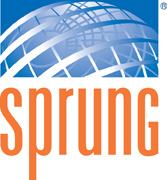Sustainable Buildings on Demand
Increased Fire Safety
Redundancy Prevents Building Collapse
There are many design redundancies in a membrane-covered frame that increase the overall safety of the structure. These include structural redundancy, and easy insertion of sprinkler and alarm systems.
The structural function of the membrane is to transfer environmental forces to the aluminum support frame. Although the structure is designed without benefit of the membrane, the membrane provides a redundant load path for stability of the structural system. The system is stable without the membrane. With the membrane, damage to one or more arches or fabric panels will not reduce the stability or load carrying capacity of the structure.
In the case of a fire several conditions could occur. If all the membrane is destroyed, the frame should be capable of supporting its own weight and a utility load allowance. In this situation, the effect of the environmental loads on the structure is minimal since the membrane is not there to transfer the environmental loads to the aluminum support frame. If the fire is in a localized area, and one of the load carrying arches is damaged due to a fire, the support system should be designed to permit load sharing of the imposed loads with the adjacent arches. If there is a fire in a in a localized area, and a panel of the membrane is damaged the effect on the capacity of the support system is minimal.
An internal fire source can generate sufficient heat to damage the architectural membrane. An opening in the membrane will allow the venting of smoke and heat without compromising the structure of the whole building and avoids the collapse of the building on occupants.

Photo: Sprung Instant Structures, Inc.
Tree of Life Church located in New Braunfels, Texas, showing indirect lighting and exposed fire suppression system
Exposed Fire Suppression Systems
In a tensioned membrane structure, fire suppression systems are exposed. In fact, one of the qualities of a permanent, habitable membrane-covered structure as opposed to a temporary building is the quality assurance that the building has been engineered to support required equipment. Conventional sprinkler and fire alarm systems can be easily installed and maintained. Design professionals may also choose to add quick response, high flow or additional sprinkler heads in lobbies or areas with high occupancy. Interior standpipes can also be installed as part of an overall sprinkler and fire safety design strategy.
Fire Fighting: Easy Access
A membrane-covered structure can be easily penetrated by firefighting personnel at any given point on the structure. Firefighters can fight the fire from the perimeter of the structure and penetrate the structure as needed. When a membrane is exposed to fire, it melts but does not spread the fire. Fire will not travel across the system causing more fire damage to the structure.
Due to the high vaulted ceilings in these structures, a smoke reservoir is created in the high roof areas, leaving the floor clear of smoke, making it easier for occupants to safely exit the structure and for fire fighters to locate and extinguish the fire. Roof monitors with dampers can be installed to remove smoke as it collects in these high roofs (smoke reservoir) areas.
Safety and Security
Clients may be concerned by the ephemeral appearance of a tensioned membrane structure and the possible vandalism from piercing the envelope. Tensioned membrane structures have been sighted in some of the most populated regions of North America and there have been virtually no reports of vandalism or break-ins. The architectural membrane is made of a rip stop construction that prevents tearing or puncturing of the membrane. Most graffiti can be easily removed from the coated membrane surfaces. Used as prison dormitories, the buildings are as secure as most conventional building types.

Photo: Sprung Instant Structures, Inc.
Aerial view of the Martensville Athletic Pavilion
The Bottom Line
Design professionals have many choices to make for their clients that include a multitude of options, from speed of construction, to the delivery of a "wow" factor on a limited budget. As architect David Simpson states, "After four years, the building still works well for the client." He continues to be amazed that a building that looks so large on the inside seems much smaller on the outside and fits the scale of the community so well.
Next generation membranes like Kynar and comprehensive insulation packages are what has propelled these type of structures into "lifetime" building markets after 30 years. Similar to re-roofing a conventional building, a new membrane can be installed to provide another 30-year cycle.
As an alternative to large box buildings, or smaller buildings, used as clubhouses, restaurants, or additions, the choice of these vaulted, and expressive, tensioned membrane structures makes design sense. Interiors can be configured independent of the overall structure, allowing for great flexibility for use, renovations and re-use. They can be constructed for approximately 35 to 50 percent less than the cost of a conventional structure, with similar aesthetic qualities and high-rated performance requirements.
Tensioned membrane structures are eligible for many green building rating systems particularly for their high performance values. These structures can be a sustainable choice as an addition to the design professional's building portfolio.

|
Sprung Structures engineered high-performance, tensioned membrane structures are designed to provide innovative, cost-effective building solutions for interim and permanent applications. www.sprung.com |








